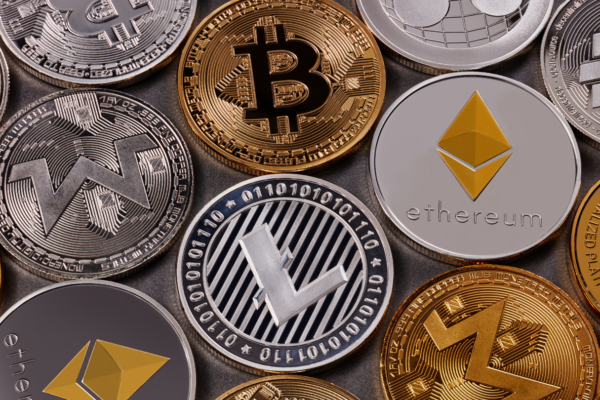What is Terra (Luna)? Is it Halal?

IW
IFG Staff Writers
11 min read
Last updated on:
Terra is an open-source blockchain network that is an ‘algorithmic stablecoin’. Algorithmic stablecoins track a currency or asset to replicate their price.
Algorithmic stablecoins translate it into a cryptocurrency without backing it with fiat reserves or collateral. The aim is to merge traditional finance with decentralised finance.
The Terra ecosystem was one of the most popular stablecoin systems in the crypto space with its LUNA token and the TerraUSD (UST) cryptocurrency that tracked the US dollar.
However, after the markets began declining in late 2021 and 2022, the network and its founders have become controversial names in the crypto space after the stablecoin became – well – unstable and its price collapsed and was no longer pegged to the dollar.
There are ongoing investigations into the network and its founders.
Most scholars hold Terra and Luna to be halal, we also share this view.
Continue reading for a deep dive into Terra and Luna and the Islamic views on them.
What is a stablecoin?
A stablecoin is a cryptocurrency that is pegged to a traditional asset or currency with a stable price, such as a fiat currency or commodity.
Stablecoins are meant to provide calm in the usual storm of crypto volatility because they are pegged to these more established assets and currencies. This allows crypto investors to diversify their volatile crypto portfolios and also use cryptocurrencies as they would fiat.
There are three types of stablecoin:
- Crypto-backed
- Fiat-backed
- Algorithmic
Crypto-backed stablecoins over-collateralise their tokens to mitigate crypto-volatility. Fiat-backed stablecoins maintain their prices by being backed by reserves of fiat that can be exchanged for the token. Algorithmic stablecoins maintain their pegs through automated algorithms that control supply without reserves or collateral.
Stablecoins are the most potentially mainstream technologies in the crypto space and have the power to accelerate traditional finance into the crypto age. Governments and authorities are increasingly looking into stablecoin regulation, with the Bank of England looking into creating its own pound sterling stablecoin.
What is Terra?
Terra is an open–source blockchain network that serves the niche of stablecoin creation. It is an algorithmic stablecoin ecosystem that does not track pegged currencies and assets via reserves, but through converting the TerraUSD token into the native Luna token through an algorithmic process.
Terra was created by the South Korean Terraform Labs founded by Do Kwon and Daniel Shin in 2018 by raising $32m from backers such as Binance.
Do Kwon was employed by Apple and Microsoft so already had experience in the tech sector before he founded his startup, Anyfi, which offered decentralized wireless mesh networking solutions.
Shin founded the payment technology company Chai (which partnered with Terra to allow users to use Terra for payments) and also co-founded the South Korean e-commerce company Ticket Monster.
Kwon co-authored the Terra whitepaper in 2019 which outlined the purpose of the Terra blockchain in five key reasons:
1. ‘a stable digital currency that is designed to complement both existing fiat and cryptocurrencies as a way to transact and store value.’
2. ‘The protocol adjusts the supply of Terra in response to changes in demand to keep its price stable.’
3. ‘If Bitcoin’s contribution to cryptocurrency was immutability, and Ethereum expressivity, our value-add will be usability. The potential applications of Terra are immense. Immediately, we foresee Terra being used as a medium-of-exchange in online payments, allowing people to transact freely at a fraction of the fees charged by other payment methods.’
4. ‘We see Terra being used as a dApp platform where price-stable token economies are built on Terra.’
5. ‘Terra is looking to become the first usable currency and stability platform on the blockchain, unlocking the power of decentralization for mainstream users, merchants, and developers.’
What does Terra do?
The Terra blockchain is a dual-token system for a (previously) popular stablecoin famously pegged to the US dollar. There is the cryptocurrency stablecoin Terra (UST) and the utility and governance token LUNA. Terra also lets users create their own stablecoins pegged to fiat currencies.
Each Terra (UST) stablecoin is convertible into the system’s native LUNA token. Whilst Terra (UST) is stablecoin, Luna is a utility and governance token that allows holders to participate in governance, peg stablecoins, pay network transaction fees, and stake in the Delegated Proof-of-Stake consensus mechanism.
Terra uses an algorithmic process and its dual-token system to keep UST pegged to the US dollar. The idea was to combine the benefits of traditional fiat currencies such as stability with the decentralisation and fast transaction speeds of cryptocurrency technology and become the de facto payment method used around the world.
In addition to the US dollar, Terra offered stablecoins pegged to other fiat currencies such as the South Korean Won.
Up until recently, Terra and Luna were two of the most popular cryptocurrencies in the world with Terra holding the 7th spot by market capitalisation. This is until Terra’s dramatic crash in May 2022 when it became de-pegged from the dollar and its price dropped to mere cents.
Terra’s fall and the launch of Terra 2.0
May 7 was a historic day in the crypto world when the unimaginable happened. Terra (UST) which had a market cap of $18 billion became untethered from the dollar and could no longer maintain its $1 peg.
Terra fell 35 cents on the 9th of May, and then continued falling to fractions of a cent.
Its sister token, Luna, which is supposed to counterbalance UST supply fell to a few cents by the 12 May from a high of over $100 per token.
As the broader crypto market began to melt following wider market trends, whales began to liquidate their Terra and Luna with tens of millions being liquidated in the space of a few moments. Terra has a platform called Anchor which offers yields on UST savings (which would not be halal!) which saw massive amounts of UST being dumped as investors panicked and a sell-off began.
The situation worsened when reports confirmed that co-founder Do-Kwon was pseudonymously behind a previously failed stablecoin called Basis Cash.
As it continued its freefall, the entire Terra network was halted twice in fear of the network’s security being breached. In the wake of this carnage, the Terra community voted to create a new blockchain: Terra 2.0.
On 28 May, Terra 2.0 was launched and the protocols and applications of the original Terra network would be migrated to this new second iteration. The original LUNA token was renamed Luna Classic (LUNC) with the new second version of LUNA keeping the name of the original. TerraUSD is now known as TerraClassicUSD (USTC).
How does Terra work technically?
Stability, seigniorage, and the dual-token system
Terra means Earth and Luna means Moon. The names are symbolic of how UST and LUNA function as two sides of the same coin and give each other stability. The system maintained harmony by Terra and Luna having a 1:1 value in dollar terms.
The idea behind this dual-token system was that if UST ever crept above $1, an equivalent amount of Luna can be swapped for UST (because they are convertible at a 1:1 ratio with each other in USD). By swapping Luna for UST, the supply of UST becomes inflated, reducing the overall value of UST and sending it back down to $1.
If UST fell below $1, the idea was to swap UST for Luna, reducing the supply of UST and therefore making it more scarce and valuable, driving the price back up to $1.
Seigniorage refers to this newly minted currency. This entire process works through algorithms that balance the supply of UST through swaps all day long. This theoretically ensures stability and scalability.
Delegated Proof-of-Stake (DPoS)
DPoS is considered a more robust and democratic version of the Proof-of-Stake consensus mechanism used by major blockchains such as Ethereum.
Bitcoin is famously pased on the Proof-of-Work (PoW) mechanism for mining new coins. PoW allows new blocks to be formed by miners dedicating intense computational power to solve complex mathematical puzzles. The person who solves these increasingly complex puzzles, is rewarded with the coin. The disadvantage of PoW is how energy-intense it is and therefore not scalable.
Proof-of-Stake on the other hand is more eco-friendly and scalable. Users ‘stake’ coins, meaning lock coins for a period of time, and they are chosen at random (and in proportion to the amount of coins they lock up) to mine the new block and are rewarded with a coin.
Delegated Proof-of-Stake (DPoS) is more democratic. Stakeholders vote for ‘delegates’ who secure the network and partake in the staking process. Usually, the more coins you have the more voting rights you get to pick delegates. As a stakeholder you can outsource the staking process to a few delegates. Both the electors and the delegates are rewarded proportionally.
DPoS is not only more efficient than PoS since stakeholders can outsource the mining process, but it is more fair since rewards are shared proportionally between electors and delegates.
What are the use cases of Terra and Luna?
Stablecoin and transactions
The biggest selling point of Terra and Luna was that they powered a potentially global crypto payment system that avoided the volatility of other cryptocurrencies by pegging to the US dollar.
This marriage of stability and revolutionary technology was supposed to bring a payment system with low transaction fees and high transaction speeds that was decentralised, open source, and borderless.
DeFi and dApps
The Terra blockchain is built on a framework called Cosmos SDK. This framework allows other developers to create their own custom blockchains and build their own decentralised applications (dApps) using the Terra system.
The Terra ecosystem hosts more than 100 projects built by third-party developers, from Web 3 applications and decentralised finance (DeFi) applications to Non-Fungible Tokens (NFTs).
Are people using Terra and Luna right now?
The old Luna coin, Luna Classic (LUNC) regularly used to have a 24-hour trading volume over $1 billion before its collapse in May. After the dramatic meltdown, LUNC now has a regular 24-hour trading volume below $100 million. While that’s not insignificant, it is a far cry from Luna Classic’s heyday.
Luna (the second and current version) regularly has a 24-hour trading volume of under $5 million, showing that it has not been adopted and trusted like its predecessor. TerraUSD is in the same boat, with a regular sub-$5 million 24-hour trading volume.
It will be difficult to regain the trust of the community and public after the collapse and scandals that have afflicted the Terra ecosystem.
What are the strengths and weaknesses of Terra and Luna?
Strengths
- Using its DPoS consensus mechanism, Terra has a lot of potential to scale in an eco-friendly and more democratic manner than other cryptocurrencies in general.
- The Terra Alliance is an organisation of companies spanning the globe that advocate for the integration of TerraUSD into global payment ecosystems.
- The Terra ecosystem holds the promise of being the de facto stablecoin network with its dApps and smart contract capability.
Weaknesses
- Terra has lost the trust of the community and the public, and it will be difficult for it to regain its lost market dominance and the trust it held.
- Terra is under more scrutiny than ever before, which means it is more liable to regulation and being penalised.
- As a very new and untested technology, Terra and Luna have not been tested under various market conditions. It completely collapsed when facing its first real market decline, which does not bode well for the future when it is exposed to more stressors and shocks.
Are Terra and Luna good investments?
Luna Classic (LUNC) is currently trading at $0.00005876, which is a far cry from the over $100 price it used to command. Given the collapse of the original Terra network, it is unlikely that LUNC will regain the position it held any time soon.
It currently dwindles in the 217th spot by market capitalisation. LUNC would be a very risky investment, even by cryptocurrency standards.
LUNA is ranked 2786 by market capitalisation. It started trading at a high of $20 and has fallen tenfold of what it was in the current bear market, trading now at around $2.
TerraUSD, which is now called TerraClassicUSD (USTC), is now trading at $0.007991 and holds a rank of 259 with a market capitalisation of $81 million.
Big names in the crypto space like Binance are being sued for promoting Terra, and Terra’s problems don’t seem like they will be going away any time soon. Most major cryptocurrency exchanges have delisted Terra so it’s becoming more difficult to trade the tokens.
In the short to medium-term with its own controversies and the wider bear market, Terra is one of the riskiest investments in the space. And that’s in a world of risky investments.
Alternatives to Terra and Luna
Tether
Tether (USDT) is the largest stablecoin, taking the number 3 spot in the whole crypto space by market capitalisation.
Issued by Hong Kong based company Tether, it maintains its peg to the US dollar using reserves of cash, treasury bills, fiduciary deposits, and commercial paper. The USDT token has retained its stability amid the Terra collapse and the bear market, consistently trading at $1.
It has a market cap of $71 billion and was seen as more of a safe haven after the downfall of Terra and Luna, leading it to have just under 8% market dominance in the entire crypto world.
USD Coin (USDC)
Coming in at rank number 4, USD Coin is another stablecoin that has proved itself as a viable alternative to Terra. It has consistently maintained its peg to the dollar, and has a market capitalisation of $54 billion with a market dominance of just under 6%.
USDC was founded by a consortium that includes the popular exchange Coinbase. It’s 1:1 value ratio of the dollar is backed by actual dollars (in the form of cash and treasury bonds), and it claims that USDC is issued by regulated financial institutions.
It saw large amounts of capital influx from investors fleeing the Terra ecosystem.
Binance USD (BUSD)
With a market dominance of just under 2%, Binance USD is a stablecoin that comes in at a market rank of 6 with a market capitalisation of $17 billion. It has consistently maintained its peg to the US dollar.
BUSD is backed by US dollars and is issued by the world-renown cryptocurrency exchange Binance and is approved and regulated by the New York State Department of Financial Services (NYDFS).
Is Terra halal?
Most scholars hold Terra and its TerraUSD and Luna tokens to be halal. We also share this view.
The essence of the debate on whether cryptocurrencies are halal comes down to whether they are ‘Māl’ as we have explained previously. Māl is something that can be acquired, whether it be an item or a service.
There are three stances on cryptocurrencies today:
- Cryptocurrency is not Māl, rather it is a speculative, non-Sharia-compliant investment.
- Cryptocurrency is a digital asset but not a currency.
- Cryptocurrency is a digital currency.
Proponents of view (1) argue that cryptocurrencies are not Sharia-compliant since they have no intrinsic value and are merely entries on a digital ledger.
Our view has always been that (1) does not seem right since cryptocurrencies have value as millions of people are willing to buy, hold, and trade them. They are just as real as fiat currency today which mostly exists in the spreadsheets of banks. Our monetary system became predominantly digital a while ago.
View (2) seems to be the most realistic view, as cryptocurrencies are a new and emerging technology that are yet to mature into fully fledged currencies used by economies at large. However, in practice, there is no real difference for casual users between (2) and (3) since they both consider trading cryptocurrencies to be permissible.
Conclusion
After their sudden collapse, Terra and Luna have dwindled to the depths of the crypto world with a whimper. Its algorithmic prowess, the very thing that made it unique, backfired on it and it can no longer really claim to be a stablecoin.
With the launch of the Terra 2.0 network, the founders hope to resurrect this once beloved ecosystem but the damage has been done. Investors have fled to more secure and fiat-backed alternatives, showing that traditional finance still has a place when it comes to the risk people are willing to put their portfolios in.
Find out more about crypto generally on our crypto page.
Comments (0)
Related Articles
View all
Is Bitcoin and Crypto Haram? The Ultimate Guide for Muslim Investors
14 July 2025 9 min read




Leave a Reply